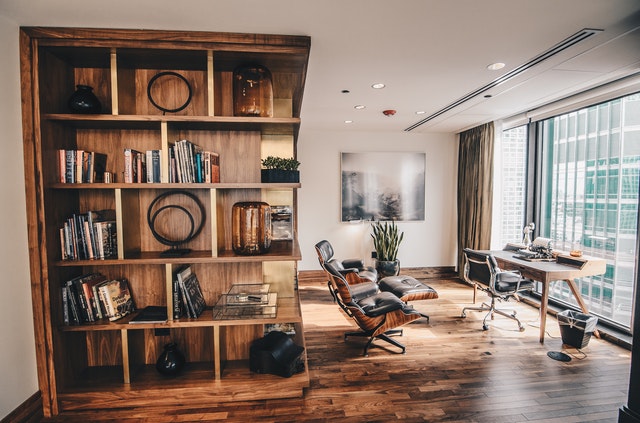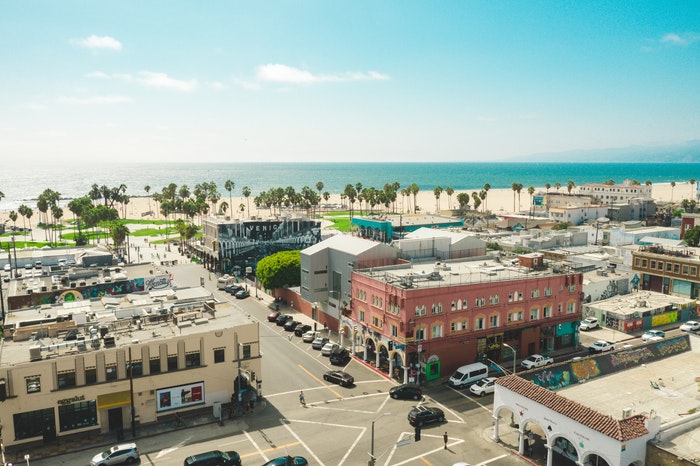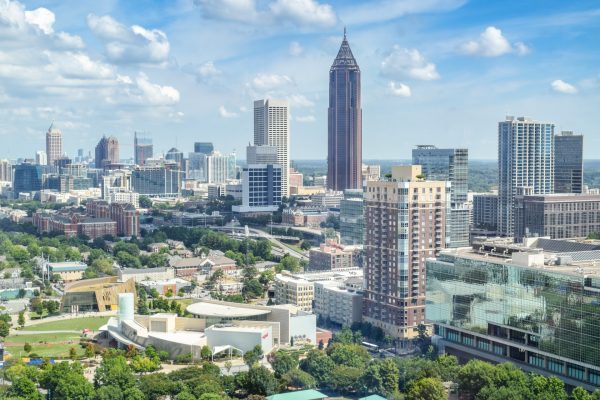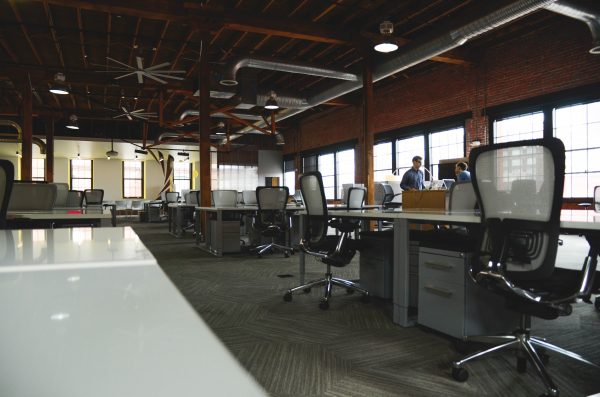Posted on December 2nd, 2021
 Eight hours per day, 4 or 5 days per week: the average office worker spends tens of thousands of hours at work over the course of their career.
Eight hours per day, 4 or 5 days per week: the average office worker spends tens of thousands of hours at work over the course of their career.
In our last blog post, we covered 5 ways to create a great office culture. Today, we’re building on these ideas and exploring some of the important steps that businesses can take to create a healthy and productive working environment for this culture to thrive in.
Because of the significant amount of time that people spend at work, employers have a duty of care towards their staff. Among other things, this entails going the extra mile to create the healthiest possible workplace environment. Here are some tips to help employers build a more productive work environment.
Adopt a holistic approach to workplace health
Health isn’t just physical; it has psychological components too. A holistic approach to health in the workplace means paying attention to:
- Physical health: Health and safety, ergonomic furniture, wellness amenities, etc.
- Psychosocial health: Relationships between co-workers, management style, communication, positive values, flexible hours.
- Development: Providing professional development opportunities and incentives to be productive and set new goals.
Read More »
Tags: 2021, productivity, workplace health
Posted in Business Advice, Office Relations, Office Talk | No Comments »
Posted on November 4th, 2021
 There’s no doubt that a healthy organizational culture is one of the greatest assets any company could have. Employee engagement, motivation, retention, and talent attraction are greatly influenced by company culture.
There’s no doubt that a healthy organizational culture is one of the greatest assets any company could have. Employee engagement, motivation, retention, and talent attraction are greatly influenced by company culture.
But culture can be an abstract concept. How exactly can a healthy corporate culture be cultivated in an office environment? In this article we’ll look into five ways you can do so.
Read More »
Tags: 2021, employee engagement, office culture, talent relations
Posted in Business Advice, Employment and Worklife, Office Relations | No Comments »
Posted on July 21st, 2021
 Office renovations can help create a more productive workplace and support a business’s branding strategy. However, these projects can have a significant impact on capital expenditure. Calculated per rentable square foot (RSF), fit-out and renovation costs went ranged from $90 to $220/RSF in 2019-20, depending on location, office size, cost of labor, and industry sector – since some businesses (such as tech companies) require fit-outs to higher and more costly specifications.
Office renovations can help create a more productive workplace and support a business’s branding strategy. However, these projects can have a significant impact on capital expenditure. Calculated per rentable square foot (RSF), fit-out and renovation costs went ranged from $90 to $220/RSF in 2019-20, depending on location, office size, cost of labor, and industry sector – since some businesses (such as tech companies) require fit-outs to higher and more costly specifications.
What follows is a breakdown of the costs involved in renovating an office in the United States. *
Construction Costs
These costs involve the removal, addition or alteration of physical elements in a building, office floor or office unit. Construction costs include materials and labor, as well as fees charged by contractors, and they serve as the biggest expense in fit-out projects – accounting for 50% to 70% of the total cost.
Average costs are $90/RSF. Depending on location, they can be as high as $139/RSF or as low as $54/RSF.
Read More »
Tags: Business Advice, commercial property, Commercial Real Estate, office fit-outs, Office Space, Office Talk, Office-tips, renovation
Posted in Business Advice, Office Renovation, Office Talk | No Comments »
Posted on June 23rd, 2021
 The US office market has been dramatically transformed by the changes to work practices and mobility restrictions implemented throughout the course of 2020 and early 2021. Whilst it was predicted that the market would slowly rebound starting in recent months, the demands of office occupiers will have changed substantially since the start of the COVID-19 pandemic. Below is a brief overview of the main things to look for in an office space during the second half of 2021.
The US office market has been dramatically transformed by the changes to work practices and mobility restrictions implemented throughout the course of 2020 and early 2021. Whilst it was predicted that the market would slowly rebound starting in recent months, the demands of office occupiers will have changed substantially since the start of the COVID-19 pandemic. Below is a brief overview of the main things to look for in an office space during the second half of 2021.
Office Layout
Flexible spaces
Flexibility remains a key consideration when choosing an office, not only in terms of lease terms, but also office layouts. Many office-based companies are still unsure about their ability to retain staff in the face of reduced revenue, combating this uncertainty by implementing rotating shifts or flexible work hours, two factors which have ultimately led to businesses struggling to identify the total headcount in the office at any given time.
This uncertainty will lead to an increase in demand for modular spaces that can be adjusted depending on the number of people present in the workplace. These kinds of dynamic layouts have been an option for several years, often going hand in hand with trends towards multi-functional office spaces. Some of the main elements that typify flexible workspaces include:
- Blurred indoor to outdoor transitions.
- Movable walls and room dividers.
- Lightweight or mobile office furniture.
- Adjustable or movable lighting.
Read More »
Tags: commercial property, Commercial Real Estate, Flexible Offices, Office Rental, office space options, Office Space Trends and Forecasts, Office Talk
Posted in Business Advice, Office Space Forecasts and Trends | No Comments »
Posted on April 22nd, 2021
 A sublease is an agreement between a party who already hold a lease to a property and a separate party looking to rent the property in question, whether that be partly or wholly. For example, a business who leases five floors of office space in a building may look to sublease one of those floors, in the event that they downsize their workforce prior to the end of the initial lease. The party who holds in initial lease is known as the sublessor, whilst the third party looking to occupy a part of the leased space is the sublessee.
A sublease is an agreement between a party who already hold a lease to a property and a separate party looking to rent the property in question, whether that be partly or wholly. For example, a business who leases five floors of office space in a building may look to sublease one of those floors, in the event that they downsize their workforce prior to the end of the initial lease. The party who holds in initial lease is known as the sublessor, whilst the third party looking to occupy a part of the leased space is the sublessee.
How to Sublease
The first step is to check whether you need your landlord’s written permission to sublease a property. This should be outlined in your lease agreement. If subleasing is permitted, the agreement may also specify whether you’re required to give notice to your landlord.
Next, make sure you’re familiar with the legal aspects of subletting in your area, since every state has its own sublet laws that take precedence over lease agreements. You can check state-by-state details here.
Read More »
Tags: commercial property, covid-19, Office Space, sublease, subleasing
Posted in Business Advice, Office Talk, Subleasing | No Comments »
Posted on March 22nd, 2021
 There are certain terms you need to be familiar with when renting commercial property in the United States. Here is a list of the most important key words, in alphabetical order.
There are certain terms you need to be familiar with when renting commercial property in the United States. Here is a list of the most important key words, in alphabetical order.
All-Inclusive
All-inclusive space is available at a fixed fee and typically gives tenants access to equipped workstations, admin/reception support, and meeting rooms. Utilities, janitorial services, and security are usually included.
Class A/B/C
Office space is classified into three classes depending on quality standards and the amenities on offer.
Class A
Class A space is considered best-in-class and is usually located in new buildings that feature the highest standards of construction, design, and amenities. These offices are typically found in prime business locations.
Class B
Class B space offers a functional standard of accommodation to office-based businesses in need of well-maintained space at a reasonable price.
Read More »
Tags: commercial property, Commercial Real Estate, commercial terms, glossary, key words, Office Space, Office Talk
Posted in Office Talk, Real Estate | No Comments »
Posted on February 25th, 2021
 In a previous blog post we examined the performance of the commercial real estate market in some major US cities. This is the second article in this series, which uses data from late 2020 and early 2021 to examine vacancy and supply rates in cities such as Los Angeles, Chicago, Atlanta and Houston. These statistics illustrate the impact of COVID-19 on the commercial property rental market, as well as the types of properties that are holding strong in the face of negative trends.
In a previous blog post we examined the performance of the commercial real estate market in some major US cities. This is the second article in this series, which uses data from late 2020 and early 2021 to examine vacancy and supply rates in cities such as Los Angeles, Chicago, Atlanta and Houston. These statistics illustrate the impact of COVID-19 on the commercial property rental market, as well as the types of properties that are holding strong in the face of negative trends.
Los Angeles
Los Angeles is a hub for creative, media, and entertainment companies, many of which are office-based. The city’s proximity to major cargo ports makes it convenient for logistics and distribution businesses, both of which have kept the industrial real estate market strong.
Offices
- Vacancy rates in downtown Los Angeles are 21.5%.
- In Q4 20202, there was more than 5.5 million square feet for vacant space, with 3.4 million feet being in the Financial District.
- The majority of vacant inventory involves Class A offices.
- Supply increased by more than 2 million square feet in the past 12 months.
- No new supply is expected to enter the market as no projects are currently under construction in the CBD area.
- Vacancy rates average 22.5% outside of the CBD, however, they reach 56% in the Fashion District.
- Vacancy rates are just under 18% in the Greater Los Angeles area.
Read More »
Tags: 2021, Atlanta, Brooklyn, chicago, Houston, Los Angeles, Seattle, vacancy and supply
Posted in Atlanta, Best Cities for Business in the USA, Brooklyn, Chicago, Houston, Los Angeles, Office Space Forecasts and Trends, Seattle, Trends and Statistics | No Comments »
Posted on February 11th, 2021

With a market size of nearly $900bn, the United States has one of the world’s largest commercial real estate markets, coupled with some of the most desirable business locations to match. This post serves as the first part of our examination into the US market’s performance based on data from Q4 2020 and Q1 2021.
Read More »
Tags: 2021, Boston, Dallas, dc, new york, philadelphia, San Francisco, vacancy and supply, Washington
Posted in Best Cities for Business in the USA, Boston, Dallas, DC, Manhattan, New York, Office Space Forecasts and Trends, Philadelphia, San Francisco, Trends and Statistics, Washington | No Comments »
Posted on February 6th, 2021

Tech Square is a rapidly developing neighborhood covering a total of approximately 8 acres. The area is located in Midtown Atlanta, between 3rd and 8th Streets in their intersection with Williams and West Peachtree. Approximately 3 miles north of downtown Atlanta, Tech Square can be accessed via bike lanes, mass transit, and two interstate roads.
The development of Tech Square is part of a revitalization project that has been transforming the face of Midtown since the early 2000s. Today, the area is known for its bustling character and high business density, especially in the creative and tech sectors.
The creation of this new district has put Atlanta’s office market in the spotlight. The city is now considered a robust secondary market with strong fundamentals and millions of square feet under construction. The largest sub-markets are the CBD, Midtown, and Buckhead. Approximately half of Atlanta’s total office inventory is Class A space, which is particularly abundant in Tech Square.
Read More »
Tags: accelerators and incubators, Atlanta, coworking, office space options, Office Talk, Serviced Office Space
Posted in Atlanta, Business Districts | No Comments »
Posted on January 27th, 2021
 Commercial real estate was one of the hardest hit sectors following the coronavirus outbreak in 2020. The pandemic and the measures taken to curb its spread brought significant changes to office-based workplaces, driving a sharp and sudden increase in remote work practices. The most immediate consequence of this shift was a softening in rental activity due to the decreased need for physical office space in the short-term. As a result, 2020 ended with a marked decline in take-up volume and an increase in office vacancy rates across the nation.
Commercial real estate was one of the hardest hit sectors following the coronavirus outbreak in 2020. The pandemic and the measures taken to curb its spread brought significant changes to office-based workplaces, driving a sharp and sudden increase in remote work practices. The most immediate consequence of this shift was a softening in rental activity due to the decreased need for physical office space in the short-term. As a result, 2020 ended with a marked decline in take-up volume and an increase in office vacancy rates across the nation.
The United States office rental market entered the new year in a scenario marked by declining rental rates and compromised fundamentals. As we move further into 2021, these trends are likely to remain in place and some markets may begin to feel the full impact of the economic crisis, whereas others will prove more resilient.
Read More »
Tags: commercial property, Commercial Real Estate, Office Market Trends, Office Space Trends and Forecasts
Posted in Office Space Forecasts and Trends, Office Talk, Real Estate, Trends and Statistics | No Comments »
 Eight hours per day, 4 or 5 days per week: the average office worker spends tens of thousands of hours at work over the course of their career.
Eight hours per day, 4 or 5 days per week: the average office worker spends tens of thousands of hours at work over the course of their career. There’s no doubt that a healthy organizational culture is one of the greatest assets any company could have.
There’s no doubt that a healthy organizational culture is one of the greatest assets any company could have.  Office renovations can help create a more productive workplace and support a business’s branding strategy. However, these projects can have a significant impact on capital expenditure. Calculated per rentable square foot (RSF), fit-out and renovation costs went ranged from $90 to $220/RSF in 2019-20, depending on location, office size, cost of labor, and industry sector – since some businesses (such as tech companies) require fit-outs to higher and more costly specifications.
Office renovations can help create a more productive workplace and support a business’s branding strategy. However, these projects can have a significant impact on capital expenditure. Calculated per rentable square foot (RSF), fit-out and renovation costs went ranged from $90 to $220/RSF in 2019-20, depending on location, office size, cost of labor, and industry sector – since some businesses (such as tech companies) require fit-outs to higher and more costly specifications. The US office market has been dramatically transformed by the changes to work practices and mobility restrictions implemented throughout the course of 2020 and early 2021. Whilst it was predicted that the market would slowly rebound starting in recent months, the demands of office occupiers will have changed substantially since the start of the COVID-19 pandemic. Below is a brief overview of the main things to look for in an office space during the second half of 2021.
The US office market has been dramatically transformed by the changes to work practices and mobility restrictions implemented throughout the course of 2020 and early 2021. Whilst it was predicted that the market would slowly rebound starting in recent months, the demands of office occupiers will have changed substantially since the start of the COVID-19 pandemic. Below is a brief overview of the main things to look for in an office space during the second half of 2021. A sublease is an agreement between a party who already hold a lease to a property and a separate party looking to rent the property in question, whether that be partly or wholly. For example, a business who leases five floors of office space in a building may look to sublease one of those floors, in the event that they downsize their workforce prior to the end of the initial lease. The party who holds in initial lease is known as the sublessor, whilst the third party looking to occupy a part of the leased space is the sublessee.
A sublease is an agreement between a party who already hold a lease to a property and a separate party looking to rent the property in question, whether that be partly or wholly. For example, a business who leases five floors of office space in a building may look to sublease one of those floors, in the event that they downsize their workforce prior to the end of the initial lease. The party who holds in initial lease is known as the sublessor, whilst the third party looking to occupy a part of the leased space is the sublessee. There are certain terms you need to be familiar with when renting
There are certain terms you need to be familiar with when renting  In a previous blog post we examined the performance of the commercial real estate market in some major US cities. This is the second article in this series, which uses data from late 2020 and early 2021 to examine vacancy and supply rates in cities such as Los Angeles, Chicago, Atlanta and Houston. These statistics illustrate the impact of COVID-19 on the commercial property rental market, as well as the types of properties that are holding strong in the face of negative trends.
In a previous blog post we examined the performance of the commercial real estate market in some major US cities. This is the second article in this series, which uses data from late 2020 and early 2021 to examine vacancy and supply rates in cities such as Los Angeles, Chicago, Atlanta and Houston. These statistics illustrate the impact of COVID-19 on the commercial property rental market, as well as the types of properties that are holding strong in the face of negative trends.

 Commercial real estate was one of the hardest hit sectors following the coronavirus outbreak in 2020. The pandemic and the measures taken to curb its spread brought significant changes to office-based workplaces, driving a sharp and sudden increase in remote work practices. The most immediate consequence of this shift was a softening in rental activity due to the decreased need for physical office space in the short-term. As a result, 2020 ended with a marked decline in take-up volume and an increase in office vacancy rates across the nation.
Commercial real estate was one of the hardest hit sectors following the coronavirus outbreak in 2020. The pandemic and the measures taken to curb its spread brought significant changes to office-based workplaces, driving a sharp and sudden increase in remote work practices. The most immediate consequence of this shift was a softening in rental activity due to the decreased need for physical office space in the short-term. As a result, 2020 ended with a marked decline in take-up volume and an increase in office vacancy rates across the nation.